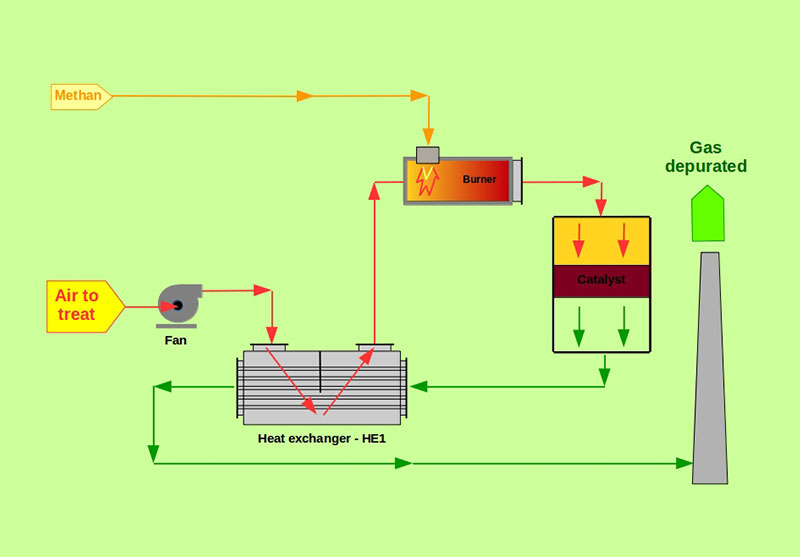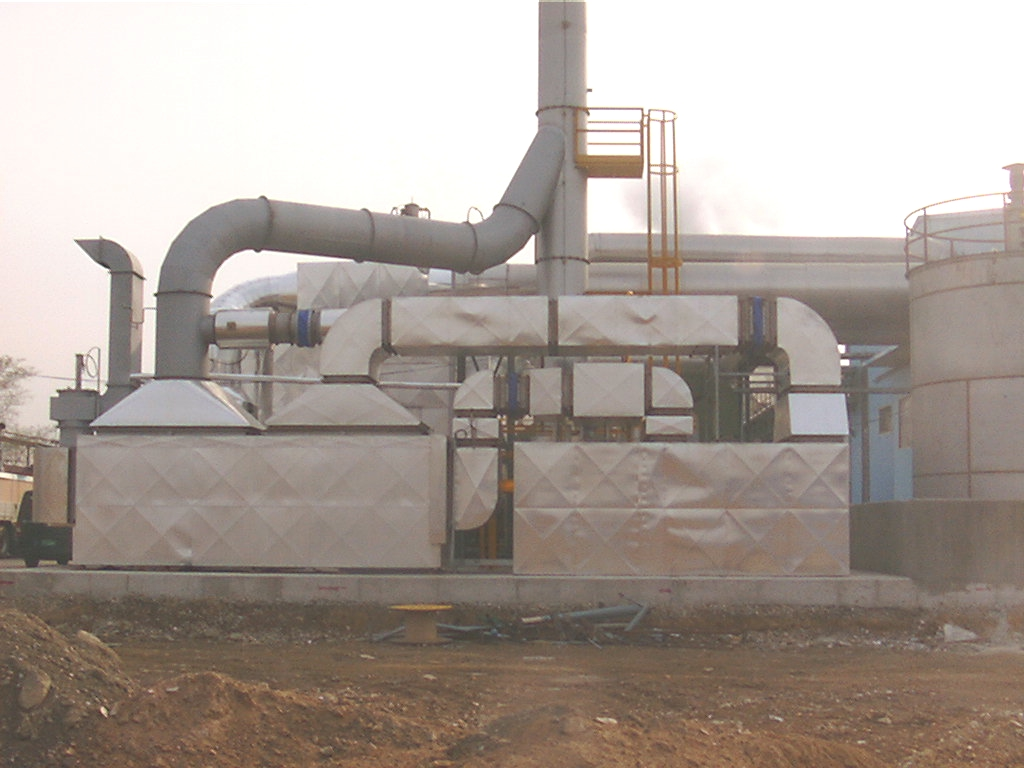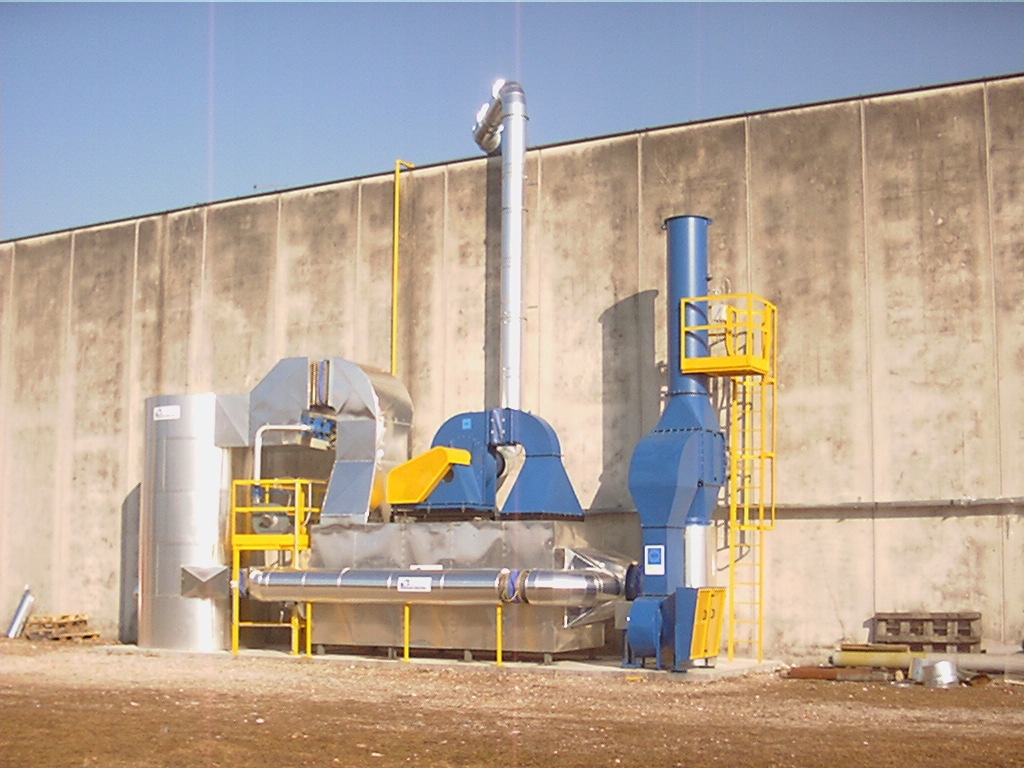Products
Catalytic oxidation plants



1. Type of technology
Oxidation with catalyst support.
2. Contaminants which can be removed
All non-halogenated hydrocarbons.
3. Emission limits possible
Conversion efficiencies exceeding al 99% can be obtained.
4. Description of the equipment and/or process
4.1 -The catalytic combustion process
4.1.1 - Purpose of the plant is to clean and deodorize gaseous streams coming from industrial processes.
Any combustion process is the product of the oxidation of organic molecules formed by atoms of carbon and hydrogen whose exothermic reaction gives carbon dioxide (CO2) and water vapour (H2O) as products.
In direct-flame combustion many phenomena occur: above all, if atoms of chlorine (Cl) and sulphur (S) are present; these give as reaction products, after thermal decomposition of the molecule, HCl and SOx respectively which require removal if present in quantities exceeding the permissible levels.
High temperature combustion, in excess air, generates quantities of NOx in direct proportion to the temperature. If chlorinated substances and polymeric chains are present in the combustion fumes at high temperature, aromatic polychlorinated substances could be produced.
4.1.2 - Such phenomena are eliminated in combustion processes carried out in the presence of a catalyst at the temperature of approx. 260-450° C.
At a temperature between 260 and 450°C, the molecules of most of the VOCs in the air are decomposed upon coming into contact with the activated part of the appropriate catalyst. The gaseous stream to be cleaned is first brought to the combustion ignition temperature by preheating in a heat exchanger and then, if necessary, through the heat produced by the combustion of the auxiliary fuel which is normally natural gas.
Oxidation of the pollutants can be achieved with an efficiency up to 100% if there is an adequate contact time between the effluent to be cleaned and the catalyst.
Adequate contact time is ensured by correct dimensioning of the catalytic bed.
The heat content in the clean gaseous stream is partly recovered via a heat exchanger for preheating subsequent gaseous streams to be cleaned.
The preheating temperature and therefore efficiency of the heat exchanger should be determined according to the quantities of contaminants and the amount of energy to be saved.
Normally heat exchanger efficiency (usually of the smooth tube type) is approx. 70%.
The initial heat recovery can be followed by other forms of heat recovery, downstream of the process, and suitable for preheating the air, water or heat transfer oil.
4.1.3 - A new cultural and technological approach to solving problems of treating polluted gaseous streams should be adopted owing to the very many processes as well as the process conditions and variety of safety parameters which must be taken into account each time, not to mention the cost-effectiveness factors to be balanced in the various processes.






